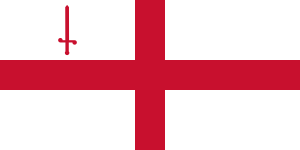Visit Explore London
Visit Explore London
 About - City of London
About - City of LondonConstituent country - England
No. of Areas - 1
Population - 10,847
Area - 9,700 km2
Pop. Density - 2.90 km2
The City of London, often referred to simply as the City, is a unique and historic county within Greater London, known for its significant role in finance and commerce. Here are key facts about the City of London:
Historical Origins: The City of London has a history dating back to Roman times, around AD 43, when it was established as Londinium. It has remained a continuous settlement since then.
Size and Population: Covering just 1.12 square miles (2.9 square kilometers), the City of London is the smallest ceremonial county in the UK. Despite its small size, it has a daytime population of over 500,000 due to the influx of workers, although only around 8,000 people reside there permanently.
Financial Hub: The City of London is one of the world's leading financial centers. It hosts the London Stock Exchange, the Bank of England, and numerous international banks, insurance companies, and professional services firms.
Local Governance: The City of London has its own unique form of local government. It is governed by the City of London Corporation, which is headed by the Lord Mayor of London. This system is distinct from the Greater London Authority, which governs the rest of London.
Elections and Voting Rights: Unlike other parts of the UK, businesses and organizations in the City of London have voting rights in local elections. This reflects the high concentration of businesses and relatively low residential population.
The Lord Mayor's Show: The City of London hosts the annual Lord Mayor's Show, a centuries-old tradition that includes a parade through the streets of the City to celebrate the new Lord Mayor taking office.
Historic Buildings: The City of London is home to numerous historic buildings, including St. Paul's Cathedral, the Guildhall, and the Tower of London, a UNESCO World Heritage Site.
Green Spaces: Despite its dense urban environment, the City of London maintains several green spaces and gardens, such as the Barbican Estate and Finsbury Circus.
Education and Culture: The City houses important educational and cultural institutions, including the Barbican Centre, the Museum of London, and the Guildhall School of Music and Drama.
Distinct Policing: The City of London has its own police force, the City of London Police, which is separate from the Metropolitan Police that covers the rest of Greater London.
Livery Companies: The City of London is famous for its livery companies, which are historic trade associations. These companies play a significant role in the City's ceremonial activities and charitable works.
Economic Contribution: The City of London contributes significantly to the UK economy, particularly through its financial and professional services sectors. It generates a substantial proportion of the UK's GDP and is a key driver of international trade and investment.
These facts highlight the unique character, historical significance, and economic importance of the City of London within the broader context of the United Kingdom.